Since the landmark 2010 Supreme Court judgment in which it was ruled the Home Office could not tell LGBTI asylum-seekers that they could go back to their country of origin and ‘live discreetly’, the Home Office has shifted its tactics in refusing asylum claims.
As has been reported in the media, Home Office interviewers frequently ask LGBTI asylum-seekers intrusive, offensive and irrelevant questions about their sex life – despite sexuality (and the risk of persecution due to sexuality) being a matter of identity and subjective experience, not just sexual activity. These interviews are often implicitly or explicitly homophobic, as are the appeal judgements of some judges.
Overwhelmed by the profound culture of disbelief in the UK Home Office, LGBTI asylum-seekers often feel compelled to submit ‘evidence’ such as photographs or videos of them engaged in same-sex activity in order to ‘prove’ their sexuality. The UNHCR’s 2012 guidelines on sexual orientation and gender identity asylum claims is very clear on this:
Applicants should never be expected or asked to bring in documentary or photographic evidence of intimate acts.
The guidelines explain that, instead:
The applicant’s own testimony is the primary and often the only source of evidence, especially where persecution is at the hands of family members or the community.
The guidelines set out areas of questioning that could be followed to ascertain an asylum-seeker’s sexual orientation, including self-identification.
The barrister S Chelvan – a world expert on sexuality asylum claims – has taken this a stage further and has developed a model called the Difference, Stigma, Shame, Harm (DSSH) model. This model is a sensitive and appropriate way of assessing credibility in sexuality asylum claims, of eliciting a detailed narrative that provides the evidence to establish that someone is a gay refugee. It has been adopted by New Zealand and Sweden, and the Home Office in the UK are considering it as “an alternative model to be referred to in determining identity”.
The DSSH model may be useful to think about if you are an LGBTI asylum-seeker, or supporting someone who is and are trying to think about your testimony, and ‘proving’ your sexuality. It may also be helpful to use it to look back at the evidence you have given in your asylum interview or appeal hearing, to identify if you have established your sexuality under its criteria. This could possibly be used to challenge a Home Office or court decision that they do not believe you are gay.
The model highlights that sexual orientation is an expression of identity – it is not just about sexual conduct. As Chelvan said in an interview with Pink News,
The over concentration and fixation that it’s all about sex in the bedroom … [in fact] the focus of persecution is not in the bedroom but in the outside world – outside the home – and the main issue is not whether someone is lesbian, gay, bisexual or trans, but the fact that they do not confirm to a stereotype of what it means to be straight in the eye of the persecutor – so what that means is that they are not ‘straight enough’.
Difference
Chelvan points out the fallacy of the Home Office asking asylum-seekers, “When did you first realise you were gay?”. Imagine asking a straight person when they first realised they were straight – they wouldn’t be able to answer it! People who self-identify as LGBTI tend to describe a point in their life when they realised that they were different, often long before they realised they were gay or engaged in any same-sex sexual activity.
Chelvan in Pink News:
“The first question I ask all of my clients is, ‘when did you realise you were different?’ And that usually sparks recognition of a date years before any sexual attraction or sexual conduct where they realise that they didn’t fit in with other girls or other boys around them. So for example you have the experience of a young boy who unlike the other boys wasn’t interested in talking about girls.
He liked to hang around with other girls and play games which weren’t stereotypically male orientated such as rugby or football – of course that doesn’t mean to say gay men do not play those sports – but it’s about gender non conformity.”
Stigma
“Then what happens is the recognition that this difference is not accepted by society and that turns into stigma, because the Mullah at your mosque or your church leader or community leader says, ‘these people who have sex with each other are abnormal, wrong and need to be punished’.”
Stigma can result from:
– recognition that close family members/friends disapprove of conduct/identity
– recognition that the ‘majority’ does not accept/disapproves of the conduct/identity of the LGBTI individual
– recognition of state/cultural/religious mores/laws which are directed towards LGBTIs
Shame
This category comes as a result of stigma, and involves feelings associated with isolation. It is the impact of feeling (because you have told this is so) that you are the ‘other’ rather than the ‘same’.
Chelvan adds: “Difference, stigma and shame comes into the common narratives of the majority – I’m not saying all – but the majority of LGBTI people throughout the world.”
Harm
This is the crucial category for proving risk of persecution when applying for refugee status. Are you at risk of harm from the state, through criminalisation of same-sex relationships or sexual activity? Do you have a well-founded fear or arrest, detention or torture? Are you at risk of persecution from non-state agents, such as mob violence or ‘corrective rape’ by community members? Are you at risk of honour killing by your family, and you can prove the state would not or could not protect you?
This harm might arise because your sexuality is known, or it may simply arise from the perception that you do not conform. Chelvan explains:
“What really happens in the majority of these countries is that your nosey neighbour will suddenly ask, ‘why don’t you have a girlfriend?’ ‘Why don’t you have any women coming around apart from these certain women on a Friday night? Why aren’t you getting married?’
And it’s because you are not conforming to that hetronormative stereotype: you are not marrying at a certain age, you are not having children, you are not doing everything that is expected of you in your culture – even if you are discreet and don’t go shouting about [your sexuality] – you are going to be identified.”
This could apply to straight people perceived as being gay, as well as people who self-identify as gay if your persecuter perceives you as gay (inputed sexuality).
Chelvan argues that the only two stages needed to decide sexuality asylum claims are:
1) Is the applicant gay or perceived as being gay?
2) Are gay people persecuted in their country of origin?
Unfortunately, the Home Office – and some judges – also seem to like to the ‘discretion loophole’ of the 2010 Supreme Court case HJ (Iran) and HT (Cameroon). The judgment in that case stated that someone was not a refugee if they would live discreetly in their country of origin (hide their sexuality) simply because that was how they would wish to live, or because of social pressures, e.g., not wanting to distress their parents or embarrass their friends, as opposed to fearing persecution.
It is extremely unlikely for this to be the case for an LGBTI asylum-seeker facing removal to a country that persecutes gay people, and yet we have often seen it relied on to deny people protection in the UK. If this has happened in your case, or you worry that it will happen, have a look at what you have said in your asylum interview or appeal hearing and see if there is anything that contradicts an assertion that you would ‘choose’ to live discreetly.
You can listen to Chelvan explain the legal framework to protection using the DSSH model in this podcast.
You can see slides outlining the key points of the DSSH model in this Free Movement blog post.


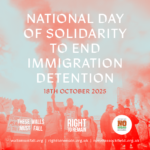

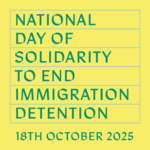
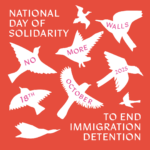






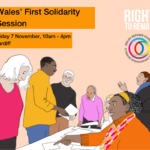
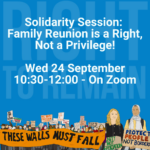
Dear sir/madam,
can you please guide me which kind of documents should be provided to process the asylum application on the basis of sexuality.
Hello Muhammad, you can learn more about how to secure good evidence here: https://righttoremain.org.uk/toolkit/evidence/